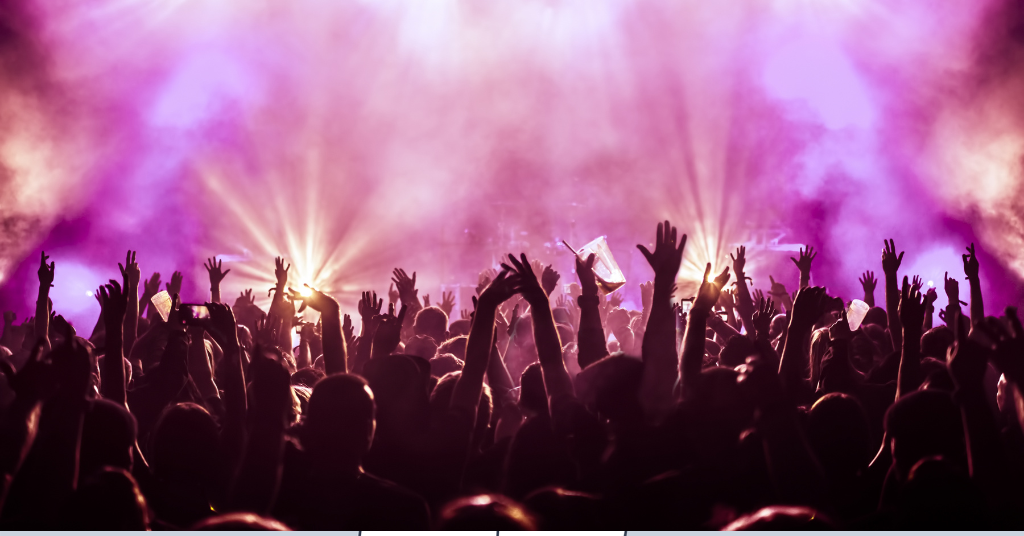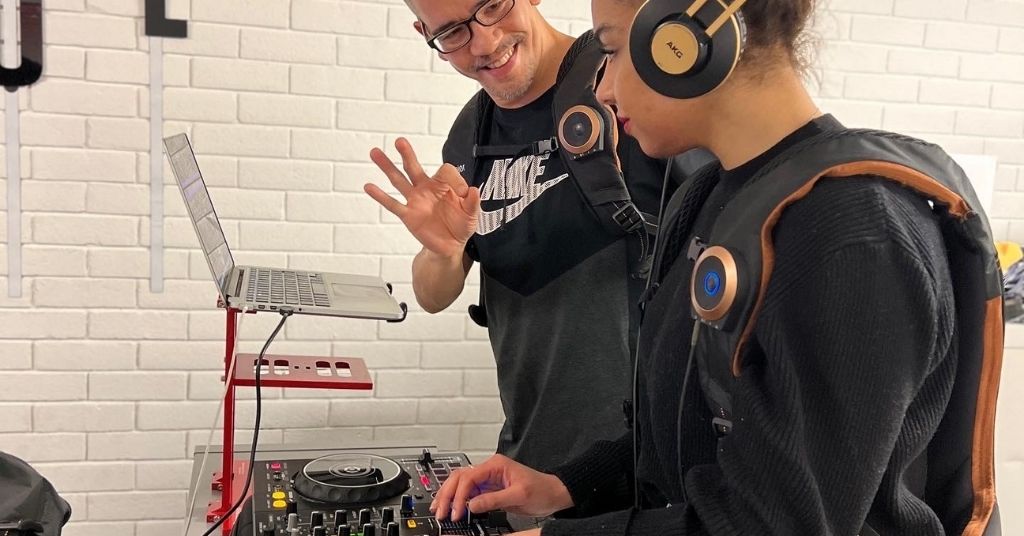
Deaf model’s cochlear implant photoshopped from ad
September 18, 2017
Deaf singer Mandy Harvey gives an unforgettable performance on AGT finals
September 20, 2017How hearing aids helped me rediscover my love for music

Music has always been a very important part of my life. When I lost my hearing, I lost a passion. Until I received my hearing aids…
As a child, I grew up in a house filled with music. Being born in the early 1960’s was the perfect time to experience the emerging styles of what would become much of the foundation for modern music.
I had my parents taste on one side, a blend of easy listening, Country and Irish pop, and my older brother’s ’60s and early ’70s chart hits. By the time I hit my teens, I was familiar with so much and was extremely eclectic in my tastes, regardless of style or musical genre.
Listening to music
As most teenagers do, I went through my phases – one of which included Rock and Roll, being a very dedicated ’50s fan. This had much to do with the summer of 1978 and the hit musical Grease. The movie took England by storm and that summer, “Grease” was most definitely “the word.” Every record shop you walked into, every market stall was playing the plethora of hit singles from the film and displaying a multitude of movie merchandise. For a 15-year-old, the movie captured the moment, and along with my friends I had to adopt the look. Yes, very amusing to look back on, but deadly serious at the time.
Like all such phases, it didn’t last. Soon, it gave way to a New Direction (pun intended). I began what we teens termed, “exchange listening.” This involved getting friends to listen to your favourite records and in turn agreeing to give theirs a listen.
My mate Steve loved rock, both progressive as well as mainstream. It wasn’t an easy listen at first, as I was used to listening to Buddy Holly and Jerry Lee Lewis. Suddenly, the sounds coming to my ears were abstract. It was strange, but over time became interesting.
A recent retro gift. The band now sound as good as they ever did, thanks to my hearing aids.
Soon, my taste changed. Within a year I had tapped into the rock underbelly of the time and was attending concerts. The rock concerts and festivals back then were loud and in many cases raw. I remember seeing a group called, “Girls School,” live in a Manchester venue, where they played on the dance floor and had to contend with the audience crowding in on them. Their speaker stacks playing full blast into the faces of the crowd.
“The rock concerts and festivals back then were loud and in many cases raw.”
I saw many very loud bands, including Rainbow, Black Sabbath, Thin Lizzy, White Snake, Saxon, Led Zeppelin, Judas Priest and Iron Maiden. When I was at home, I tended to listen with headphones clamped on my head, as that way I didn’t get grief from my rock hating family.
Playing music
Around this time I bought my first guitar and began to learn to play it. Within a year I was pretty good with my three or four chords and found myself in a band. I would play for six years in various bands during the ’80s, on my road to not being famous.
I would love to say that we were a cool rock band, but sadly, that just wouldn’t be true. We were a club band who mostly played covers, with a few of our own thrown in for good measure. As time went on I became the lead guitarist and things progressed very well for time.

However, times change and so do people’s lives. We lost our way and within a very short time split up.
All this time I was listening to music, though going to gigs had seriously fallen off, as I was sick and tired of seeing stages. I began listening to classical and opera at this time. In hindsight I believe I was doing this as something of a protest because of the band splitting up. All the while keeping my headphones firmly in place.
“All the while keeping my headphones firmly in place.”
Post millennium, I kept my fingers exercised with an acoustic guitar and learned to sing. I no longer yearned for my earlier band life, but still relished the unrivalled bliss of making music. I wrote a number of songs purely for my own personal pleasure and further expanded my listening musical collection.
Then, I discovered jazz. I found the music new and challenging. A lot of my older albums began to sound dull. I couldn’t put my finger on it, but newer, unknown music sounded better to my ears. Sometimes when I heard an original song, I would be surprised at how much it had lost, compared with my memory of how it had originally sounded back in the day.
“I couldn’t put my finger on it, but newer, unknown music sounded better to my ears. Sometimes when I heard an original song, I would be surprised at how much it had lost, compared with my memory of how it had originally sounded back in the day.”
Losing music to hearing loss
During the 1990’s I had taken private singing lessons, so knew that I had no problems in that area, however, I began having issues with songs just not working. Also tuning my guitar was easy, because I have always used electronic tuners, but the pitch of the strings sometimes began to sound a little off. Musicians will tell you that even if you’re not sure what the problem is, you can always feel it inside somehow.
“Musicians will tell you that even if you’re not sure what the problem is, you can always feel it inside somehow.”
This began happening too often and my interest in playing and singing drifted away. I still enjoyed listening to music, but tended to stick to new (to me) jazz. It was around this time that I found people around me had begun to mumble. Television, that was easy, just turn it up, but conversation, well, that was something else altogether.
Addressing my hearing loss
It took a long time, we’re talking years, before I felt confident enough to brave a hearing test. I was all too aware of the perceived stigma attached to wearing hearing aids. I think between you and I, I only took the test in the end, because it was online and as such anonymous.
Read more: New to hearing loss? 3 ways to be an advocate for your hearing loss journey

I had read everything I’d come across, but in the scheme of things understood very little. This wasn’t helped by the fact that initially my hearing aids were so different from the hearing I had been used to, that it was an alien noise blasting in my ears. I had opted for automatic volume controls, simply because the aids were a tad smaller and in my mind, smaller meant less stigma.
“I was far from happy and avoided music like the plague.”
The first week or so was far from being a great success, because everything was wrong. It was too loud, too harsh and voices sounded overly electronic. My audiologist told me that this was part of the normal process. She said it generally takes about three weeks for the brain to become accustomed to the way sound was now projected into the ears.
I was far from happy and avoided music like the plague. After a couple of months things settled down. Music began to interest me once again and I even took my guitar out of its case. The only problem was, my steel strings sounded off. I could hear a buzzing vibration. I asked other family members if my guitar strings sounded strange, but they couldn’t hear any difference.
Returning to music
It took trial and error, but I found that no matter what I did two of my strings sounded buzzy. It was horrible. I did eventually find the answer: nylon strings. I now play a classical nylon strung acoustic and it sounds amazing. Singing, I can now hit notes which I struggled with in the past. My pitch is not perfect, mind you it never was, but it’s pretty good.
“I now play a classical nylon strung acoustic and it sounds amazing. Singing, I can now hit notes which I struggled with in the past.”
My wife, Raine, suggested I should get out all of my old music and listen to it all. What a revelation that was to be. The sheer joy of hearing music, some of which I don’t think I’d ever heard as it had been intended to be heard. It turned out that the newer sounds only sounded good to me sans hearing aids, because I’d never heard them before my hearing loss.
“It turned out that the newer sounds only sounded good to me sans hearing aids, because I’d never heard them before my hearing loss.”
Now, I adore listening to music. Yes, I still enjoy having headphones on, though I do keep the volume low. The sound is so clear and pure. I know that I’m listening through an electronic device and that can hardly be deemed normal, but it has given me a new lease of musical life.
Read more: How hearing rehabilitation can help deaf musicians
Any hearing aid user will tell you hearing aids are not a perfect substitute for normal hearing. Being a hearing aid wearer means you will no doubt have good days and bad days. Some days I get little joy from my aids and I curse having hearing loss. Most days, however, I hardly think about them and instead enjoy all that they give me.
What my Phonak hearing aids have allowed is music to be restored to me in all its myriad glory. As a musician, music is one of the most important things in my life. Always has been and always will be.
These days, it is back in its rightful place. Stigma, what stigma? I wear my hearing aids with pride.




